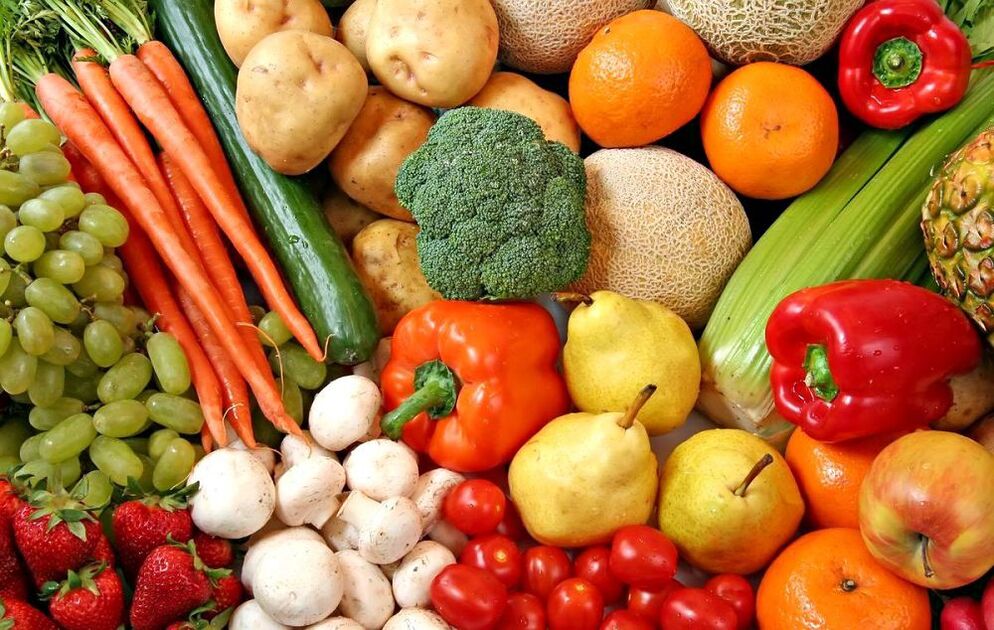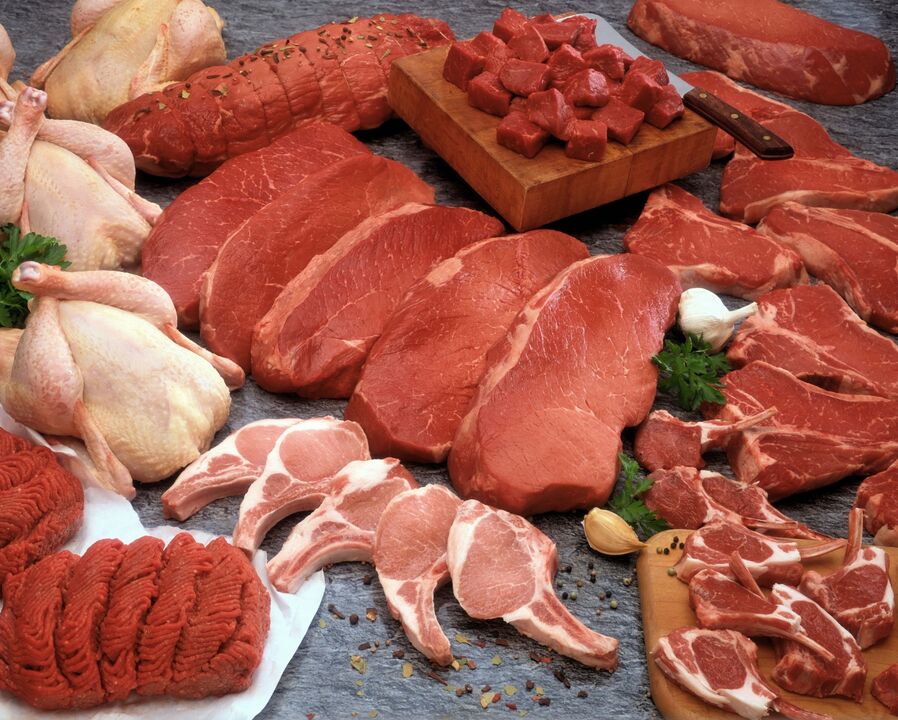The diet is based on the principles of naturopathic physician James D'Adamo, who pointed out that blood type is closely related to human nutrition. The blood type diet is based on the assumption that the composition of blood has changed during human evolution and is closely related to the type of food consumed by the vast majority of the population in a particular period.
Although there is some logic in this statement, there is no evidence-based scientific basis for separating nutrition by blood type. The following table gives some ideas on the food correspondence of people with different blood types.
| blood type | A generation (Oh) |
two (One) |
three (five) |
Four (AB) |
| Featured Products | Diet red meat (lamb/beef), cod, barracuda, olive oil, figs, beets, walnuts, pumpkin seeds. | Seafood, beans, soybeans, rice, vegetable oil, buckwheat, artichoke, soy products, pineapple, Jerusalem artichoke, vegetables. | Olive oil, lamb, goat cheese, rabbit meat, oatmeal, flounder, mackerel, cod, rice, parsley plums, cabbage. | Wheat bread, dairy products, turkey meat, lamb, mackerel, oatmeal, cod, corn oil, cranberry, kale, pineapple. |
| Limited products | Fatty meat, cheese, dairy products, cheese, pasta and flour products, potatoes, corn/peanut butter, strawberries, oranges, olives, melons, oranges, avocados. | Wheat bread, ketchup, mayonnaise, potatoes, apricots, cranberries. It is recommended to exclude meat and various meat products from the diet. | Rye bread, beef, pork, chicken, goose, shrimp, anchovies, heart, lobster, eel, corn, sunflower, peanut butter, buckwheat, tomatoes, persimmon, pomegranate. | Whole milk, beef, duck, bacon, pumpkin seeds, flounder, crab, olive oil, salmon, beans, buckwheat, banana, radish, pomegranate, avocado. |
| Weight gain food | Beans, wheat, corn, cabbage/cabbage. | Dairy products, beans, meat, wheat. | Buckwheat, corn, peanuts, lentils, sesame seeds. | Beans, corn, buckwheat, wheat, red meat. |
| Diet food | Seafood, red meat, liver. | Soy products, vegetables, pineapple, vegetable oil. | Red meat, low-fat dairy products, liver eggs, green vegetables. | Green vegetables, dairy products, seafood (excluding dried, canned, smoked, and dried), soy products, pineapple. |
1 Blood type diet
1 The positive blood type diet is based on products that mainly contain animal-derived protein in the diet. In the diet of people with this blood type, it is necessary to include low-fat varieties of red meat (beef/lamb), offal (heart, liver, lung), turkey, sea fish/river fish (herring, sturgeon, trout, halibut), Bass, salmon, mackerel, cod, sardines, pike), excluding salted fish, smoked fish and kippers.
Other products containing animal protein (dairy products, eggs) have indigestion, except for cottage cheese, which is very limited. It is recommended to use soy milk/fermented bean curd instead, but soy products can be used as a supplement, but not basic.
The blood group 1 diet includes foods that help weight loss-artichokes, Chinese cabbage, broccoli, spinach, Jerusalem artichoke, beet leaves, leeks, radishes, spinach, broccoli, parsley, garlic, horseradish, pumpkin, plums, figs. Fruit neutral vegetables include mushrooms, zucchini, white radishes, ginger, fennel, tomatoes, dill, papaya, watermelon, pears, apricots, peaches, cherries, gooseberries, and grapes.
Indigestion and not conducive to weight loss: eggplant, avocado, white/red cabbage, Brussels sprouts and cauliflower, black olives, potatoes, oranges, oranges, strawberries, strawberries, melons. Among beverages, linden/rosehip tea, plum and pineapple juice are particularly useful because they can accelerate metabolism. Chocolate, ice cream, espresso, cola, and black tea are not recommended.

Regardless of whether they have positive or negative Rh factors, dietary recommendations are provided for people with that blood type. The diet for the first Rh-positive blood type is similar to the diet for the Rh-negative blood type. The following table systematizes the list of recommended, neutral, and prohibited products for people with 1 blood type.
First blood type product table
| Respected | neutral | forbidden |
|
|
|
Diet according to the second blood type
2 The positive blood type diet is based on plant foods and is close to vegetarian food. For people with 2 positive/negative blood types, it is meaningless to include meat products in their diet because it is malabsorption and promotes fat accumulation. Sometimes you can eat neutral skinless chicken or turkey. The main sources of animal protein are seafood, fish and soy products (fermented bean curd, milk).
Especially useful are: trout, carp, pike, sea bass, white fish, cod, mackerel, sardines. It is recommended to eat fish with vegetables. Dairy products other than kefir are also unpopular in the diet. The number of eggs is 1-2 per week. Useful in grains: buckwheat, sprouted wheat berries, brown rice, and bread made from sprouted wheat berries, but you can't abuse cereal products-2-3 times a week.

The second positive blood type menu should be based on vegetables and fruits, including raw and cooked. It is particularly recommended to add broccoli, garlic, pumpkin, chicory, green beans, spinach, onions, carrots, apricots, plums, grapefruit, blackberries, strawberries, lemons, cherries, pineapples, and raspberries in the diet. According to reviews, the best results are when eating fruits grown in the area where you live. All kinds of nuts (peanuts), seeds, and green tea are very useful.
Second blood type product
| Respected | neutral | forbidden |
|
|
|
According to the third blood type diet
3 The positive blood type diet includes quite a variety of foods. People with 3 positive/negative blood types are relatively "omnivorous" and can eat most meat and dairy products (except pork and chicken), lean fish, eggs, grains (except wheat and buckwheat), mushrooms, beans and almost all typesVegetables/fruits, except olives, corn, pumpkins, tomatoes.
Unwanted products are crustaceans and various molluscs, fish eggs, waterfowl eggs, sunflower oil, nuts and seeds, edible gelatin, beans, cheese, and ice cream. Also important for weight loss is the balanced use of various types of grains.

Red/white dry wine is allowed. The nutrition of the third blood type is complete and easily tolerated, as evidenced by the comments of such food practitioners. The following table shows the dietary concepts of people with this blood type.
The third blood type product
| Respected | forbidden | neutral |
|
|
|
Group 4 diet
4 Positive blood type diet moderately mixed-meat (turkey, lamb, rabbit), fish (herring, sturgeon, tuna and sardines), seafood, lactic acid products, cheese, chicken/quail eggs, olive oil, tofu, soybeans, Lentils and beans, peanuts, walnuts, cod liver, grains (excluding buckwheat/corn), and non-acidic vegetables are placed in the salad (excluding pepper).
4 The nutrition of people with positive/negative blood types includes the use of multiple grains (oats, rice, rye, millet, buckwheat). The wheat in the weight loss diet can be limited or eliminated completely. Among vegetables, tomatoes and potatoes, which are unpopular in the diet of other people, are the best choices. Radishes, artichokes, and sweet peppers should be excluded. Among the fruits, plum grapes and most berries are suitable.
Fourth blood type product
| Respected | forbidden | neutral |
|
|
|
Allowed products
The dietary intake by blood type includes:
- For people with 1 blood type-meat in the form of beef/lamb, various internal organs (lung, brain, liver, heart). The diet must contain sea fish/river fish (flatfish, halibut, sea bass, sturgeon, mackerel, trout, herring, cod, sardines, barracuda). Any gluten-free bread is easy to digest-rice, soy and rye bread. From cereals-buckwheat, rice, barley. From the group of vegetables that should exist in the diet: Chinese cabbage, artichokes, beet leaves, parsley, broccoli, Jerusalem artichoke, spinach, leeks, garlic, pumpkin, radish, horseradish; from fruits-plums, figs, pineapple juice, plums, Helps increase metabolism. Small amounts are allowed: grape and apricot juice, cranberry juice, grapefruit juice. The recommended vegetable fat is olive oil/linseed oil. It is recommended to use green tea, seaweed, beer, hawthorn/chamomile infusion, and red/white wine.
- For people with blood type 2-marine fish/river fish (mackerel, trout, cod, bass, carp, white fish, sardine). Especially useful are all soy products-tofu cheese, milk. Most dairy products (goat milk, kefir, processed cheese, yogurt, feta, mozzarella, ricotta). The diet of flaxseed/olive oil, asparagus beans, sprouted grains, legumes, and buckwheat is very important. From vegetables, it is important to add beet leaves, Jerusalem artichoke, kohlrabi, broccoli, artichokes, red onions, Roman salad, spinach, garlic, leeks, chicory, horseradish; from fruits-apricots, cranberries, Pineapple, cherry, grapefruit, cranberry, fig, blueberry, lemon, plum. Recommended drinks are lemon juice acidified water, grapefruit juice, green tea, hawthorn/rose hip soup, and red wine.
- For people with blood type 3-meat (veal, chicken, rabbit, lamb, lamb, game), liver, milk, dairy/fermented dairy products, eggs, soy products, cereals-rice, oats, millet, millet. The diet of fish (bass, halibut, salmon, barracuda, cod, mackerel, cod, sardines), vegetables (red pepper, carrot, cabbage, eggplant, parsley), and mushrooms is mandatory. The useful ones are herbal tea, grape juice, pineapple juice, cranberry juice, cabbage juice, dry red/white wine. It is recommended to consume a small amount after meals.
- For people with blood type 4-meat (lamb, turkey, rabbit), fish (hake, mackerel, barracuda, salmon, sardines, cod, bass), cod liver, lactic acid, cheese, olive oil, tofu, walnutsAnd peanuts, various cereals (rice, oatmeal), rye and soy bread. Vegetables in the diet should include eggplant, broccoli, cucumber, parsley, broccoli, horseradish, garlic, beans, and celery. Fruits such as cherries, lemons, pineapples, grapefruits and grape juice, kiwis, and plums are very useful. Recommended drinks include green tea, chamomile, hawthorn and mint tea.
Fully or partially restricted products
The personal diet by blood type does not include the following foods:
- For people of the first blood type-pork and goose. It is not recommended to consume smoked fish, any kind of caviar, large amounts of butter, eggs and dairy products. The use of cheese, dairy products, processed cheese, whey, full fat/diluted milk is prohibited. Exclude from your diet: white bread, wheat grains, corn and oatmeal, cottonseed, peanuts, corn, vegetable oil, tomato sauce, marinades. Undesirable vegetables: eggplant, cabbage, mushrooms, potatoes, black olives.
- For people with blood type 2-certain types of fish (flatfish, anchovies, herring, halibut, beluga), caviar, smoked salmon, seafood (squid, octopus, crab, lobster, shrimp), crayfish, oysters. It is not recommended to use butter, whole/skimmed milk, cream and hard cheese, ice cream, milkshakes, white bread, kefir, yogurt, processed cheese, goat milk, pastries, cereals. From fats, cottonseed, corn, peanuts, sesame vegetable oil, margarine, butter, and solid animal fats should be excluded from the diet. Certain types of vegetables and fruits are not recommended, as well as tomato/orange juice, vodka cocktails, beer, Coca-Cola, soda drinks, and black tea.
- For people with blood type 3-pork, chicken, goose, caviar, beans, buckwheat and wheat, beans, crab, hard cheese, pumpkin seeds. Vegetables excluded: turnips, tomatoes, radishes. Do not use sunflower oil, white/black pepper, ice cream, persimmon and pomegranate, and spirits.
- For people with blood type 4-pork, goose, veal, ham/bacon, butter, seafood. It is forbidden to eat sunflower oil, apple cider vinegar, corn, buckwheat, wheat, and sunflower seeds. Prohibited from vegetables/fruits: radishes, radishes, peppers, oranges, mangoes.
Menu (power mode)
The food menu is based on a list of recommended foods for people of different blood types. The diet is normal, and there are no restrictions on the cooking and processing methods of the products.
Pros and cons
| advantage | shortcoming |
|
|
Blood type diet opinions and results
Blood group nutrition, as evidenced by the comments of individuals who practice this diet, has caused much controversy in the evidence and practical application of this theory. Therefore, it is difficult to draw a clear conclusion. People who use this diet have different opinions: some people have successfully lost extra weight, while others have not changed their weight.
































































